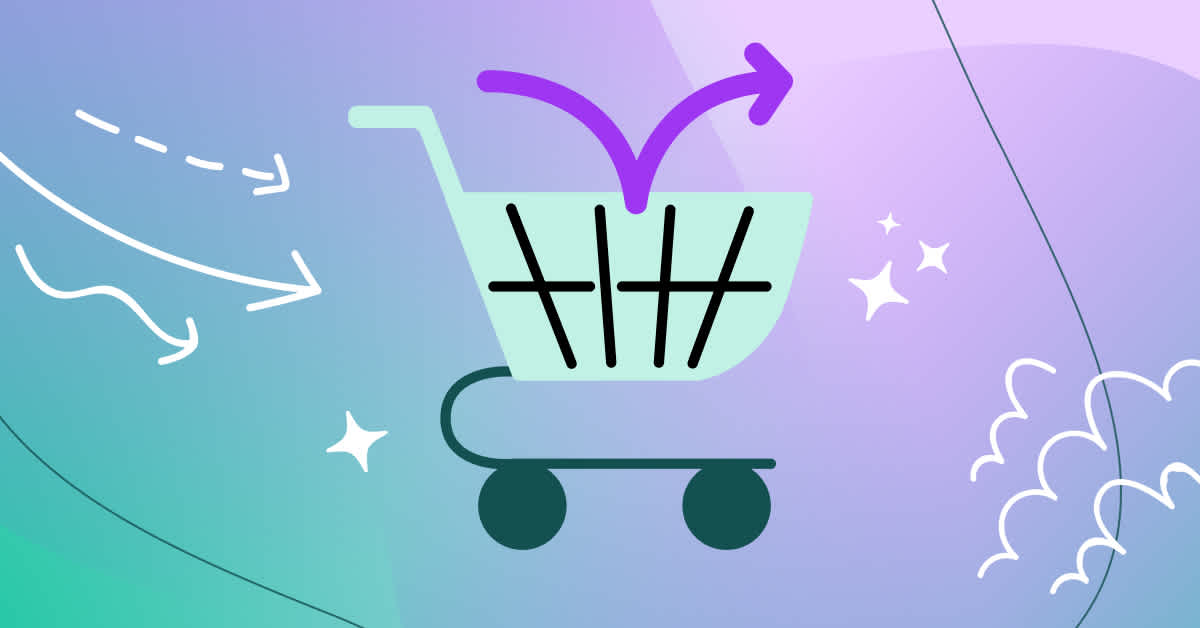Digital customers struggle to commit. They may treat their cart as a wishlist—adding things with no intention of checking out. Other times, they get distracted mid-shopping and forget to complete their purchase. And let's not forget those who abandon ship at the first sign of unexpected shipping costs or a complicated checkout process.
Cart abandonment is a widespread challenge in the digital marketplace. According to Fullstory’s 2024 Behavioral Data Index, cross-industry averages show that 14% of customers exit their session after an error occurs–and even more daunting, 44% of customers bounce after viewing only one page.
Abandoned carts represent missed opportunities and revenue. While you can’t control every decision your users make, by understanding digital behaviors, you can uncover underlying intent and take action to reduce cart abandonment rates.
Understanding digital behavior
Digital behavior can be analyzed through two key lenses:
1. Engagement: How are customers interacting with your key CTAs and user journeys? Just as importantly, how are they not engaging?
2. Friction: What unintentional obstacles are hindering your customers' progress?
Winning over our non-committal cart fillers is as simple as prioritizing the key opportunities to increase meaningful engagement and decrease friction.
Boosting engagement across your site
Engagement isn't limited to the cart screen. To understand what drives your customers to complete a purchase, consider these steps:
1. Understand why users came to your site in the first place: What are their interests and desires? What problems are they hoping your company can solve?
2. Get clear on user journeys: Ask yourself key questions to help understand your ideal user journeys, like the following:
What are the strongest and weakest points of meaningful engagement?
Which unexpected journeys lead to checkout?
Where do customers go instead of the cart/checkout page?
How do cart abandoners' behaviors differ from successful checkouts?
3. Simplify your site based on these insights: This includes removing or revising weaker paths and parts of the site associated with cart abandonment and strengthening elements that convince shoppers to buy, not just browse.
Optimizing cart screen engagement
The cart screen itself requires special attention. Focus on signals that lead to checkouts rather than high engagement levels. A busy cart screen with numerous clicks may not indicate success—customers could get lost or confused, leading to abandoned carts instead of conversions. A "less is more" approach is typically effective. By reducing the number of options or unnecessary elements on the cart screen, you help users stay focused on the checkout process.
To optimize the cart experience, analyze engagement metrics alongside conversion rates. By comparing areas of strong and weak performance, you can identify which parts of the cart screen are aiding conversions and which are creating obstacles. Armed with these insights, you can make data-driven adjustments that impact your bottom line.
Addressing friction from the homepage to the cart
Friction at any point in a customer’s journey can derail a potential sale. Even if a user smoothly adds one item to their cart, encountering an unexpected issue while browsing for another can lead them to abandon both the cart and your site—possibly for good.
Dead clicks and rage clicks
Dead clicks (clicks on an element that is not clickable) and rage clicks (rapid, repeated clicks in the same spot, usually out of annoyance) anywhere on your site can be detrimental. Analyze these actions alongside conversion rates (i.e., what was the checkout rate of users who experienced this problem?) then prioritize fixing issues that have the biggest impact on your users and your organization’s bottom line.
Site performance
Site performance is important in ensuring your users have a seamless experience without significant wait times. For example, if a large percentage of users are experiencing page load times of 6+ seconds, that's a critical issue that needs immediate attention. Focus on identifying and addressing major performance bottlenecks that have a real, measurable impact on your conversion rates.
Once you’ve identified major points of friction, take a measured, prioritized, and intentional approach to fix poor experiences across the site. Don't fix issues as you see them; instead, focus first on issues with direct impacts to the bottom of the funnel. Then, expand your efforts to the rest of the site.
Perfecting checkout is a journey, not a destination
Achieving 100% cart checkout rates is unrealistic. Factors like market differences, changes in the digital landscape, and individual shopping habits mean that there will always be some degree of variability. However, by approaching cart abandonment through the lens of behavioral data, you can uncover the true drivers behind why your customers act the way they do.
Fullstory, the enterprise behavioral data platform, helps you implement these targeted optimizations that lead to significant gains in your checkout rates. With Fullstory, you can easily collect, analyze, and take action on real-time user behavior data, helping you optimize your checkout process and significantly reduce cart abandonment.
Interested in learning more about how Fullstory can help you make your checkout process smoother, more intuitive, and more successful? Learn more today.

